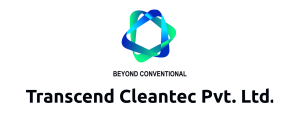Recirculating Aquaculture
The function of modern land-based intensive Mari culture systems is enabled through recirculating systems. Aquaculture has always been based on flow-through technology. Recirculating Aquaculture Systems are generally structures that put together tanks for fish maintenance and a composite system for water processing. The water in the tanks is renewed frequently; regularly every few hours. It is a necessity, since an important stocking rate and potential toxic waste products like ammonia may be detected. The usual process implies that the water is poured into the tank at the top, which makes the water to move in a clockwise rotation around the tank and it drains continually through a central drain at the bottom. The motive of the water processing is to remove waste and add oxygen before it is re-used in the tanks. A total of 95% of the water is recycled by the Efficient Recirculation aquaculture Systemstherefore; there is a constant need of fresh water supply.
The demands for quality seafood and sophisticated consumer purchasing trends have increased. This combined with the environmental and financial risks of off-shore aquaculture create the need for farmers to gain greater control over their operations. Land-based recirculationaquaculture is a solution for aquaculture companies to reduce risk, while maximizing productivity. Enquiry Now
Recirculation Aquaculture Systemis indoor land-based fish farms based on the monitoring and delivery of fish on aannual basis. The principles are the same, no matter whether the Recirculation Aquaculture System installation will use fresh water, marine or brackish water. The Recirculation Aquaculture System can achieve best and stable temperature and production all year round, regardless of climate change, environment conditions, seasonal variation or location.
Recirculating Aquaculture Systems Advantages
- There is a stable production of high quality fish all year round.
- It requires low water.
- The production of quality fish is high, in a relatively limited space.
- The risk of diseases is reduced.
- Low mortality rate.
- There is continuous control and monitoring of the system.
- It does not affect the environmental in any ways.
- Intake and effluent is reduced to the minimum.
- There is special treatment of water disposal.
Basic Principles Of A Recirculating Aquaculture System
- Fish tank
- Mechanical Filter
- Biological Filter
- Pump tank
- Pump
- Other items (e.g. UV-C light, oxygenation devices, aeration devices, feeders, monitoring, etc.)
